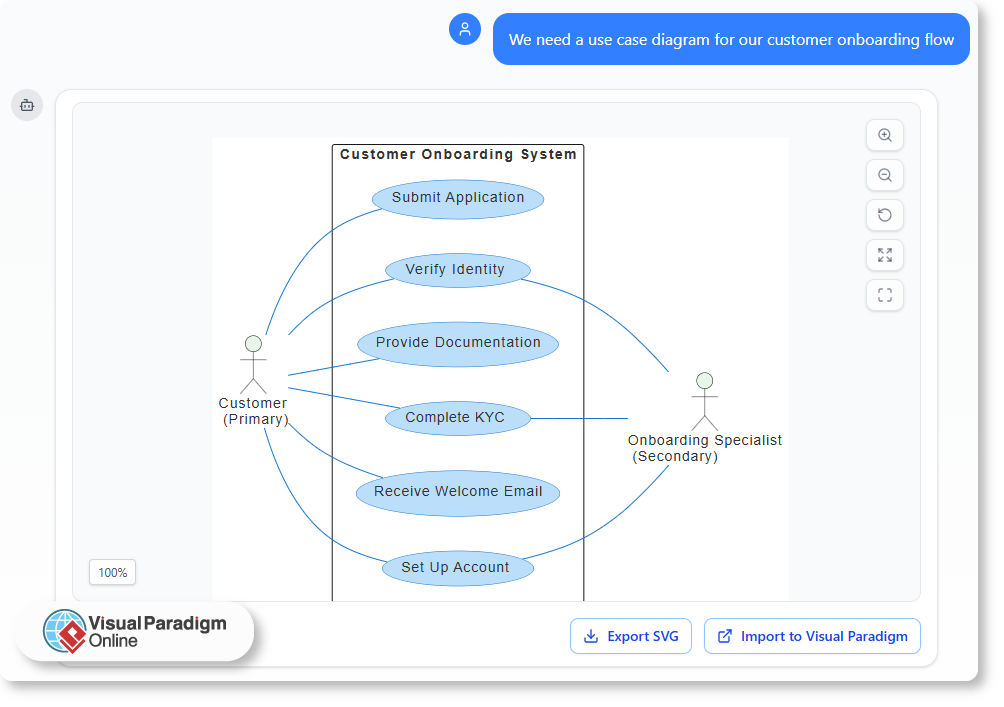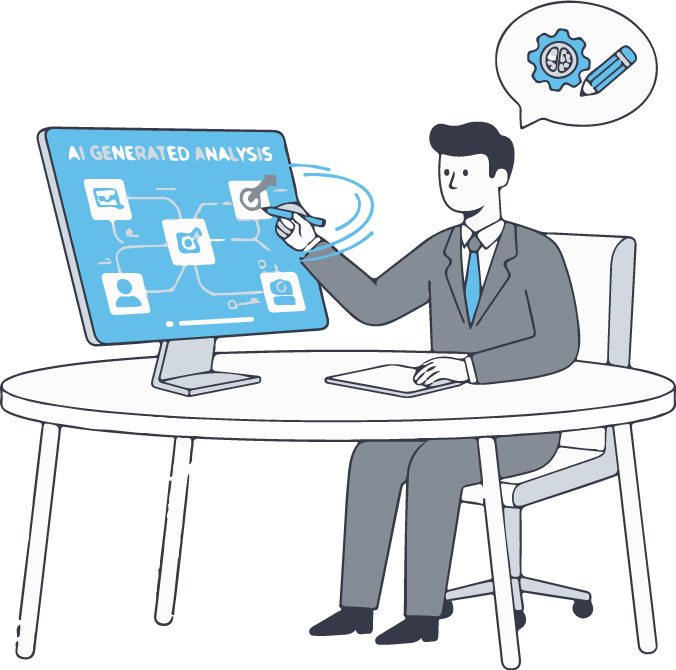Now Reading: AI and Human Collaboration in Modeling: The Future of Smarter System Design
-
01
AI and Human Collaboration in Modeling: The Future of Smarter System Design
AI and Human Collaboration in Modeling: The Future of Smarter System Design
In today’s fast-moving business environment, teams must model complex systems quickly—without losing clarity or precision. AI-powered modeling tools are transforming how we plan, design, and communicate ideas. The question is no longer whether AI can help, but how we can best combine AI-generated insights with human expertise to achieve better results.
For product owners, business analysts, and architects, this partnership defines a new standard for strategic modeling—faster, smarter, and more accurate.
This article introduces a practical framework for combining AI automation with human intelligence to produce reliable, business-ready models.
The Power of AI: From Ideas to Diagrams in Seconds
AI-powered modeling brings speed, consistency, and accessibility to the table. With natural language input, anyone can describe a system—such as “Create a use case diagram for our customer onboarding flow”—and instantly receive a standards-compliant diagram.

This unlocks new possibilities for early-stage ideation, where speed and flexibility matter most. A team exploring a market entry strategy can simply describe a SWOT analysis, and the AI will generate a complete SWOT matrix with labeled strengths, weaknesses, opportunities, and threats.
By automating manual drafting, AI frees professionals to focus on insights and decision-making rather than tool mechanics.
More importantly, the AI diagramming assistant understands modeling languages like UML, ArchiMate, and C4, eliminating the need to memorize syntax. It translates business context into structured visuals, allowing technical and non-technical stakeholders to collaborate seamlessly.
This “natural language to diagram” capability breaks down communication barriers and makes modeling accessible to everyone.
The Role of Human Insight: Refinement and Context
AI delivers powerful starting points, but the real value emerges when human professionals step in to interpret, refine, and validate results. Human expertise ensures that diagrams align with organizational rules, compliance needs, and real-world logic.
For instance, in financial or healthcare modeling, AI can generate an accurate structure, but it takes a domain expert to layer in compliance requirements, performance constraints, or data policies. This collaboration ensures the model reflects both speed and precision—AI accelerates creation, and humans ensure correctness and relevance.
The result: a trusted model that is both comprehensive and compliant.

AI + Human: A Strategic Partnership, Not a Trade-Off
The most effective teams do not choose between AI and human input—they combine both strategically based on context.
| Scenario | AI Contribution | Human Contribution |
|---|---|---|
| Ideation and early planning | Rapid diagram generation from plain descriptions | Validate assumptions, adjust business scope |
| System design with clear boundaries | Maintain modeling standards (UML, ArchiMate, C4) | Apply domain-specific adjustments |
| Regulated or complex domains | Provide structured drafts for review | Ensure compliance and handle exceptions |
| Cross-team collaboration | Create shared visuals for alignment | Confirm shared understanding across stakeholders |
This dual approach reflects a mature use of AI—leveraging automation for efficiency and applying human intelligence for interpretation and decision-making.
AI enhances the analyst’s role, expanding what they can achieve in less time. It is not about replacement; it is about amplification.
Why the Synergy Matters
When AI and human expertise work together, organizations gain more than just speed—they gain strategic clarity. AI delivers consistent, standards-based visualizations in seconds, while human review guarantees those visuals align with business goals, constraints, and strategy.
Teams that embrace this workflow benefit from:
-
Accelerated decision-making: Faster iterations from concept to diagram.
-
Reduced rework: Early validation minimizes downstream errors.
-
Broader participation: Non-technical members can contribute through plain language input.
-
Higher confidence: Human-reviewed outputs strengthen trust and alignment.
This synergy leads to models that are both technically sound and strategically relevant—turning AI-driven automation into a foundation for smarter collaboration.
Frequently Asked Questions (FAQ)
Q: Can AI understand business context in modeling?
AI interprets your language and structure intelligently. It captures business intent and translates it into diagrams, while human experts refine that context for maximum accuracy.
Q: Is AI diagramming reliable for complex systems?
Yes, AI excels in generating structured, standards-compliant diagrams. For domain-specific areas, human review ensures additional precision and compliance.
Q: How does the AI chatbot for diagrams help business teams?
It lets anyone—technical or not—turn ideas into professional diagrams instantly, supporting collaboration across departments and skill levels.
Q: What if the AI generates something unexpected?
That is part of the creative process. AI produces a strong starting structure, and human experts fine-tune it for accuracy and nuance.
Q: Can AI generate summaries or reports from diagrams?
Absolutely. The AI can analyze models and produce summaries or documentation. Human editing then ensures the final report aligns with business language and objectives.
Q: Does human review slow down projects?
Quite the opposite. A brief review step prevents costly corrections later, accelerating overall project delivery and ensuring consistency.
The Future of Modeling: Collaborative Intelligence
The future of modeling is not AI versus humans—it is AI with humans.
AI delivers the structure; humans deliver the meaning. Together, they create clarity, efficiency, and insight that neither could achieve alone.
Start exploring AI-powered modeling with Visual Paradigm’s AI Chatbot Assistant.
Transform plain ideas into presentation-ready diagrams—and refine them with your expert touch—at chat.visual-paradigm.com.

